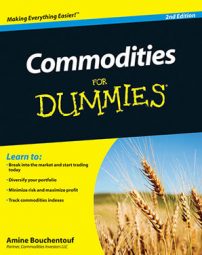Measuring natural gas can be confusing because multiple measurement methods exist for the commodity. These measurements basically boil down to how much physical natural gas there is and how much energy the natural gas generates.
Whereas crude oil is measured in barrels (each barrel contains 42 gallons of oil), natural gas is measured in cubic feet. Recall from chemistry class that a cubic foot is a measure of volume for a square prism with six sides, each 1 foot in length. (The technical name for this shape is a regular hexahedron, but you can simply think of it as the shape of a sugar cube!)
Because natural gas is in a gaseous state, it’s easier to measure it in cubic feet. Sometimes natural gas is converted into liquid form, known as liquefied natural gas (LNG), LNG is also measured in cubic feet.
The abbreviation for cubic feet is cf (both letters are lower case). Therefore, 10 cubic feet is abbreviated as 10 cf. To have practical applications, cubic feet must be able to measure large amounts of volume. Consider the abbreviations for measuring larger volume amounts of cubic feet:
100 cubic feet: 1 Ccf
1,000 cubic feet: 1 Mcf
1 million cubic feet: 1 Mmcf
1 billion cubic feet: 1 Bcf
1 trillion cubic feet: 1 Tcf
Note that cf is always in lower case, and the first letter of the abbreviation is always capitalized. Many futures contracts based on natural gas are measured in cubic feet.
Natural gas can also be measured by the amount of energy it generates. This energy content is captured by a unit of measurement known as the British thermal unit, or Btu. One Btu measures the amount of heat necessary to increase the temperature of 1 pound of water by 1°F.
To put it in perspective, 1 cf is the equivalent of 1,027 Btu. British thermal units, sometimes called therms, may appear on your gas bill to express the amount of natural gas your household consumed during a particular period of time.
For investment purposes, however, natural gas is generally quantified by using cubic feet.

